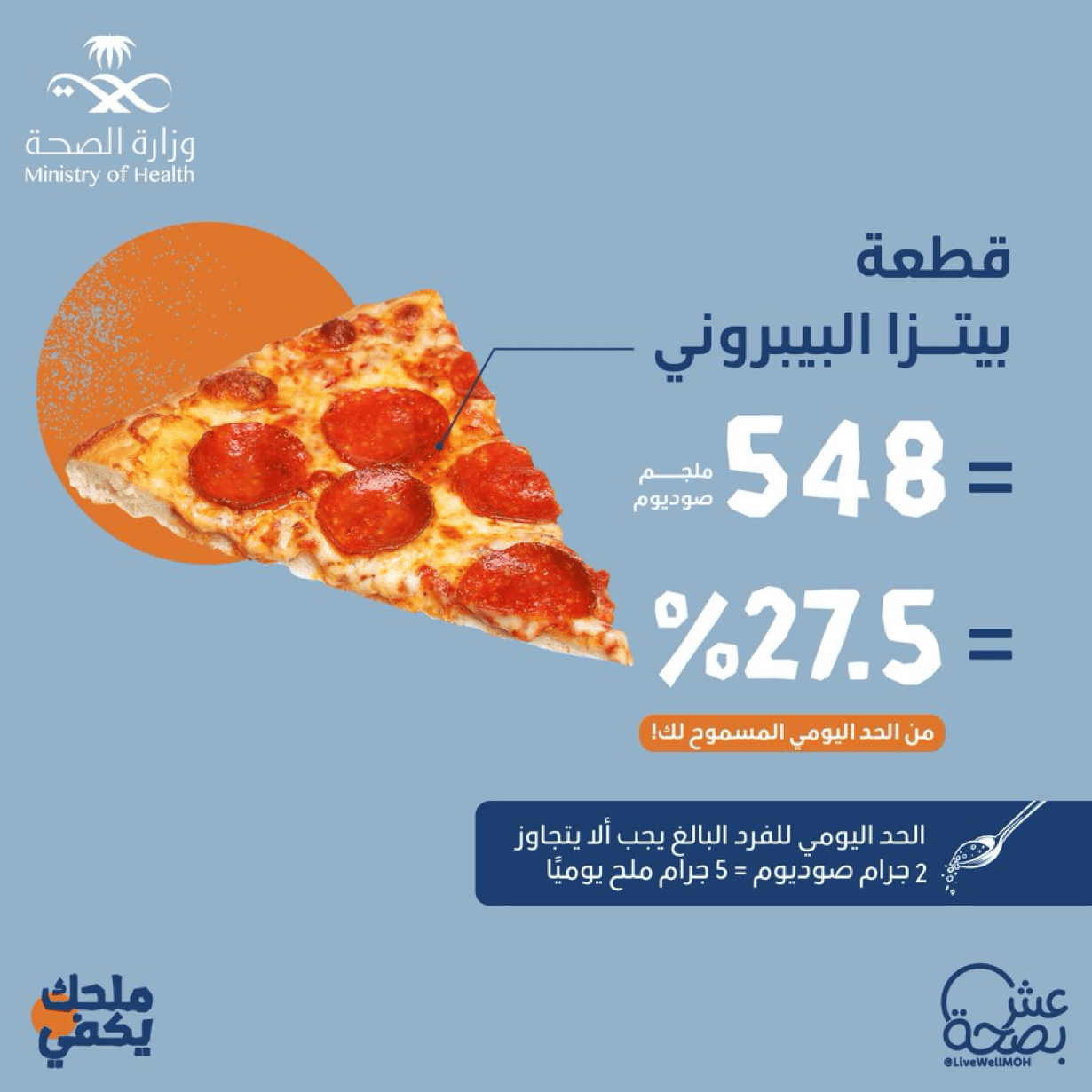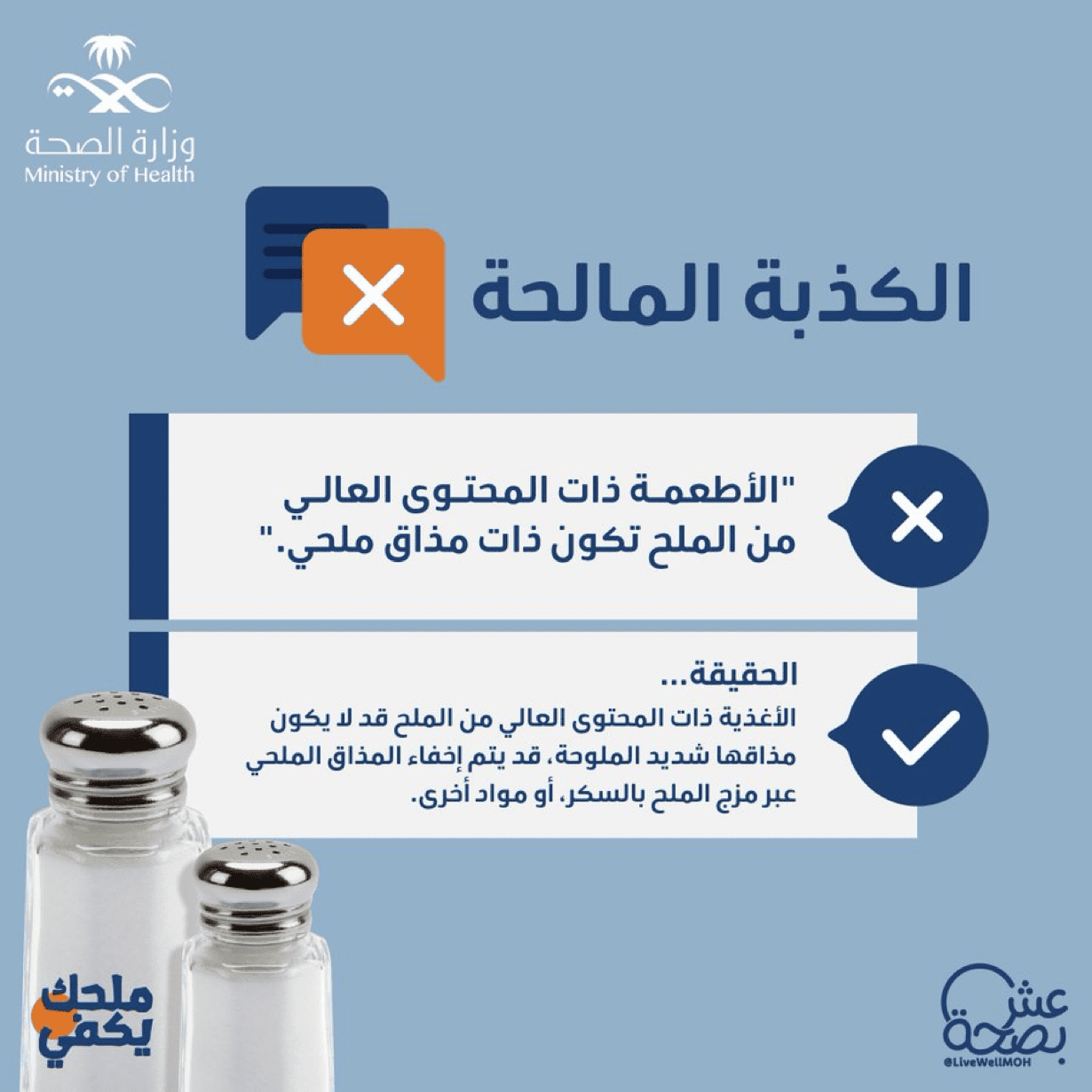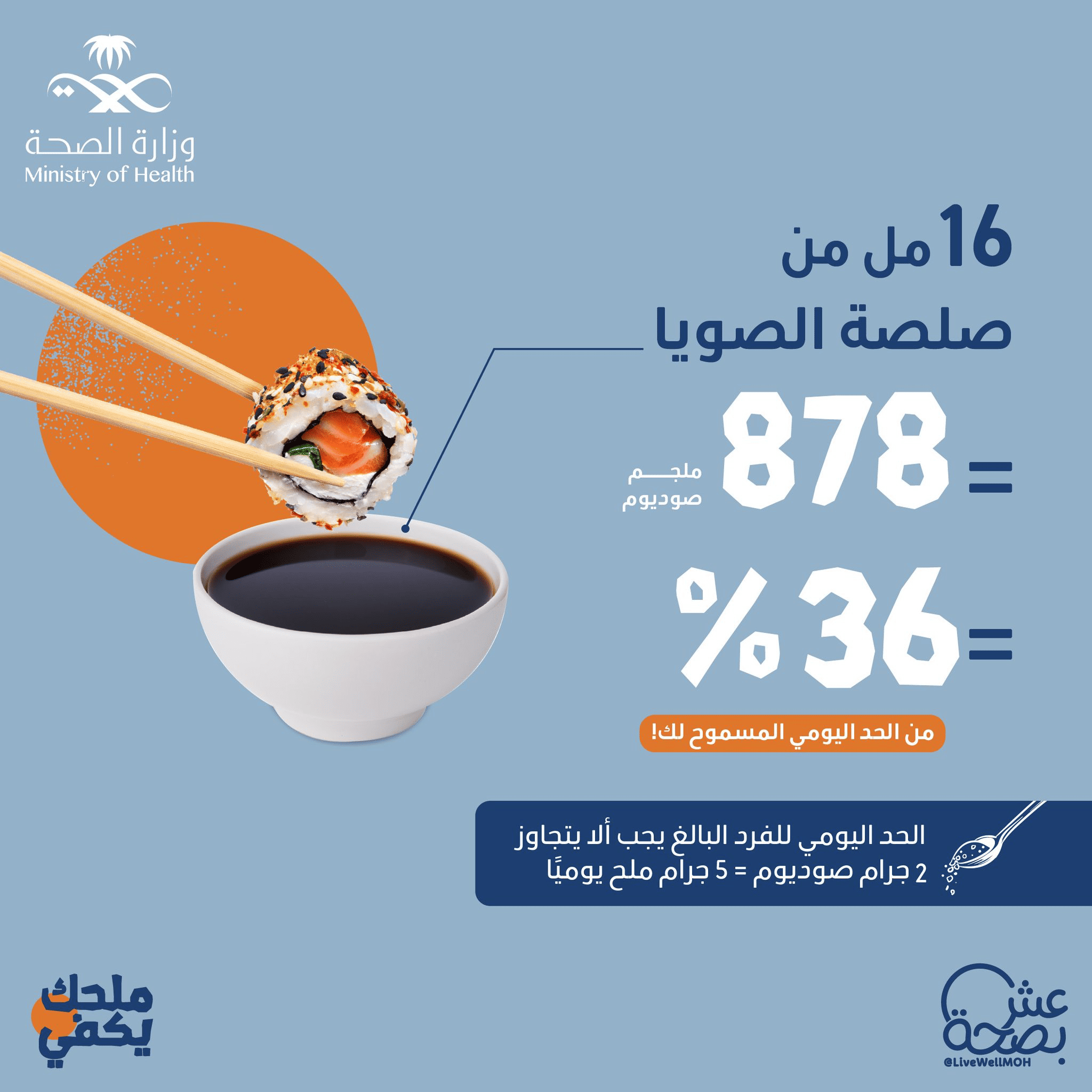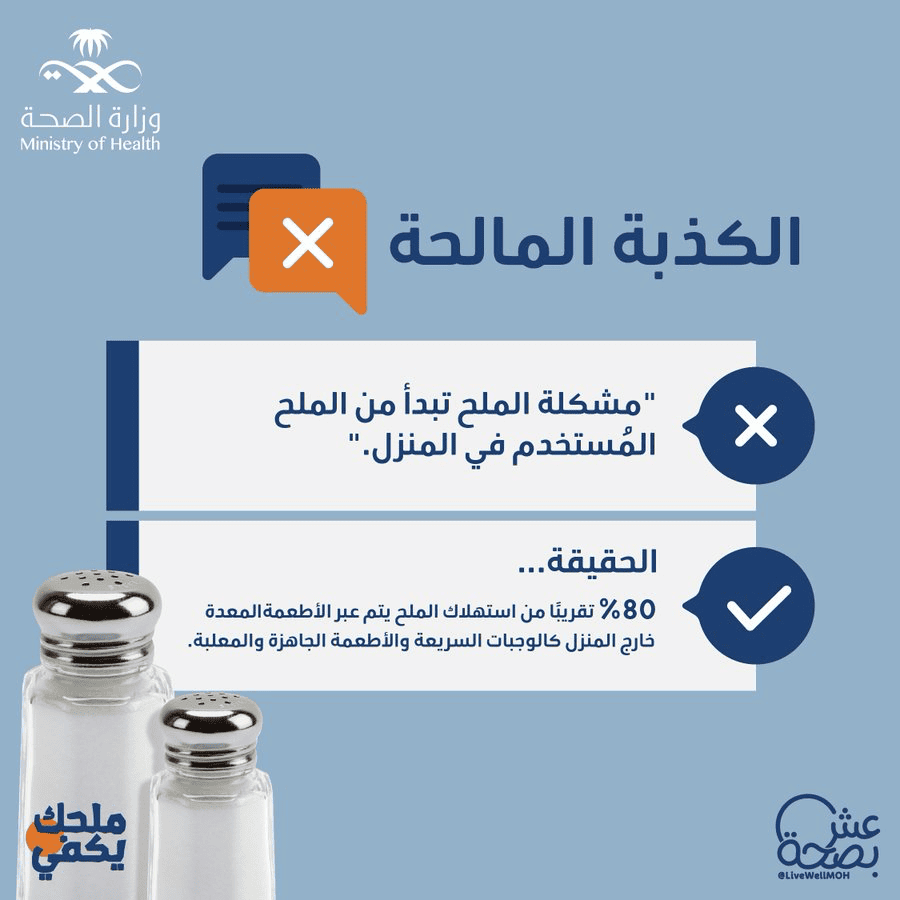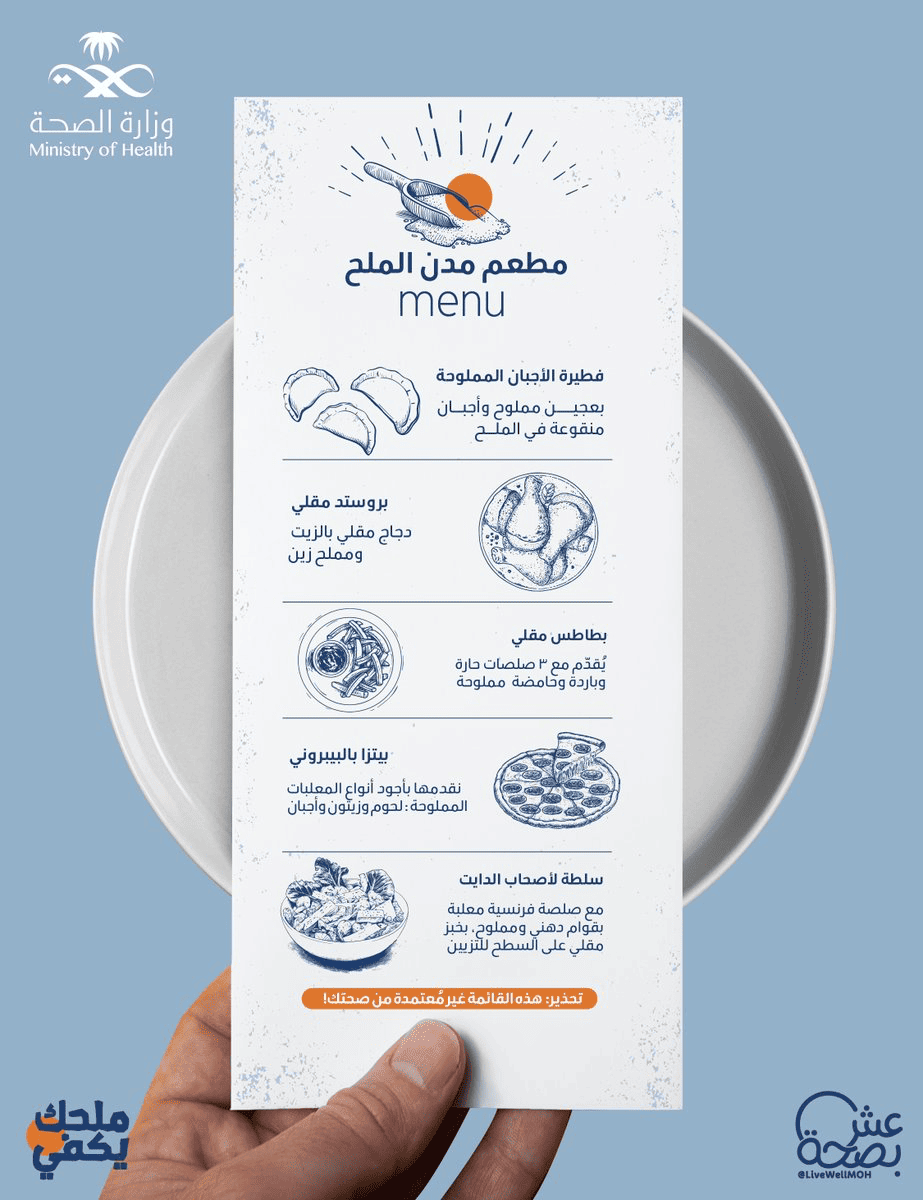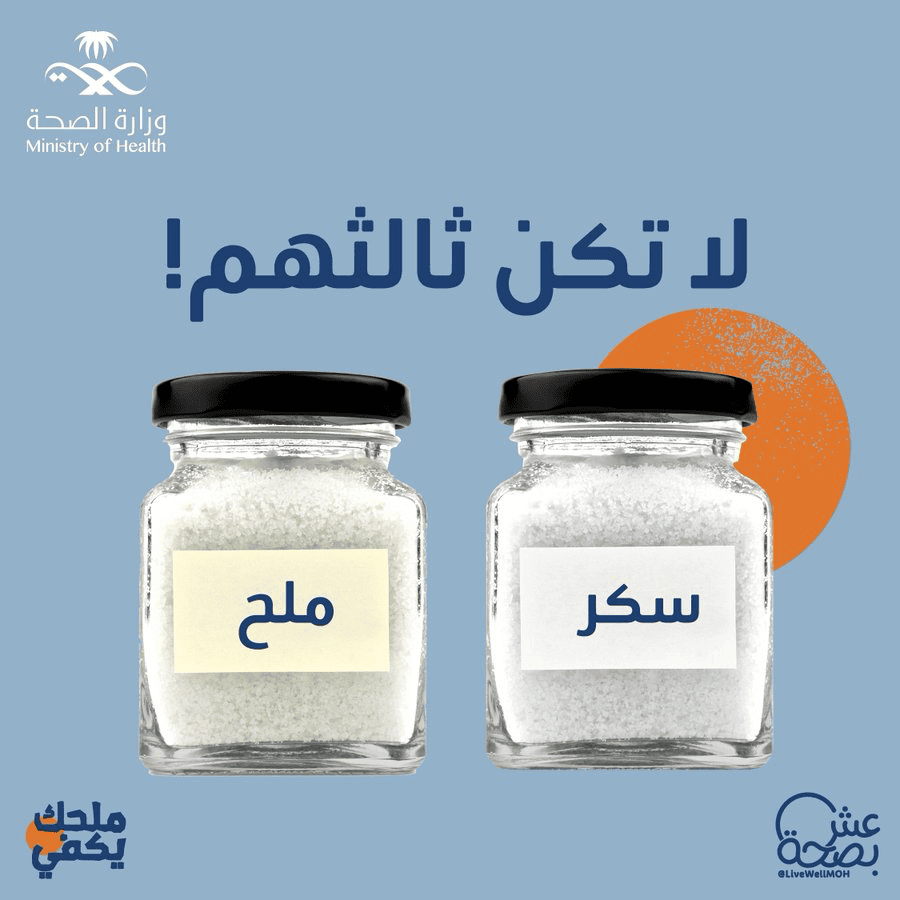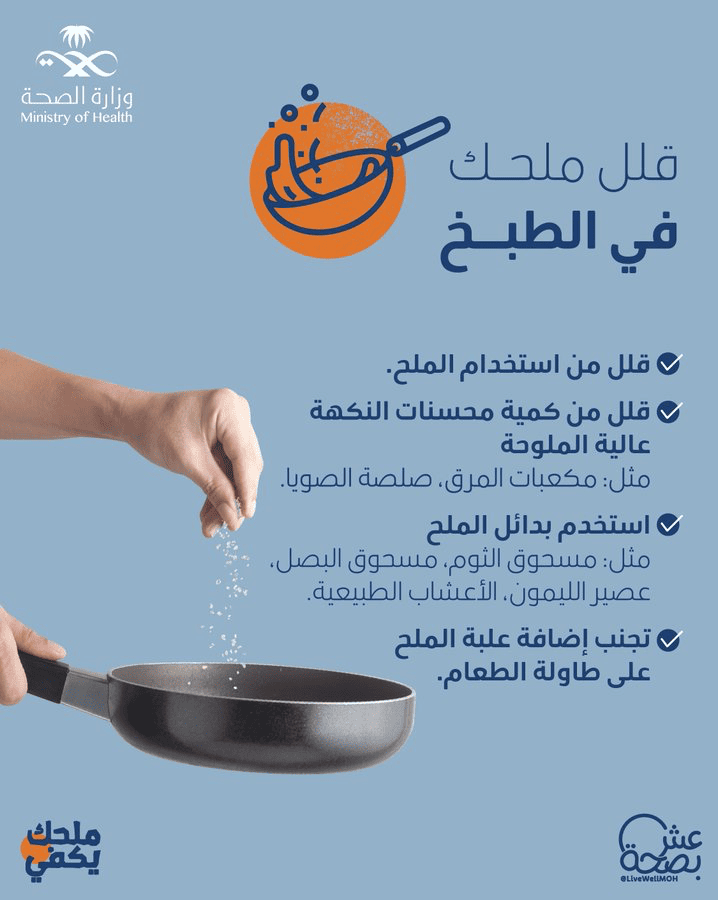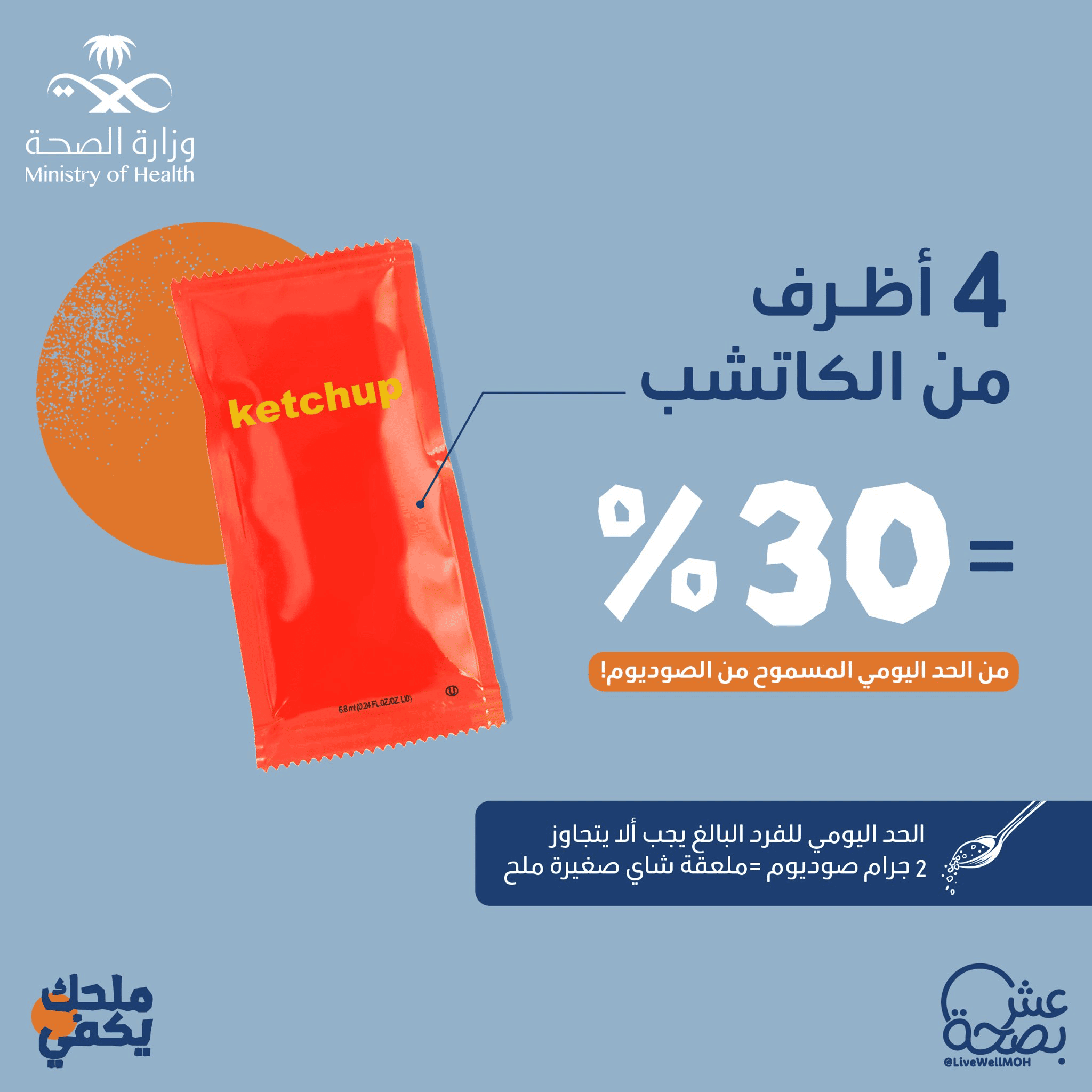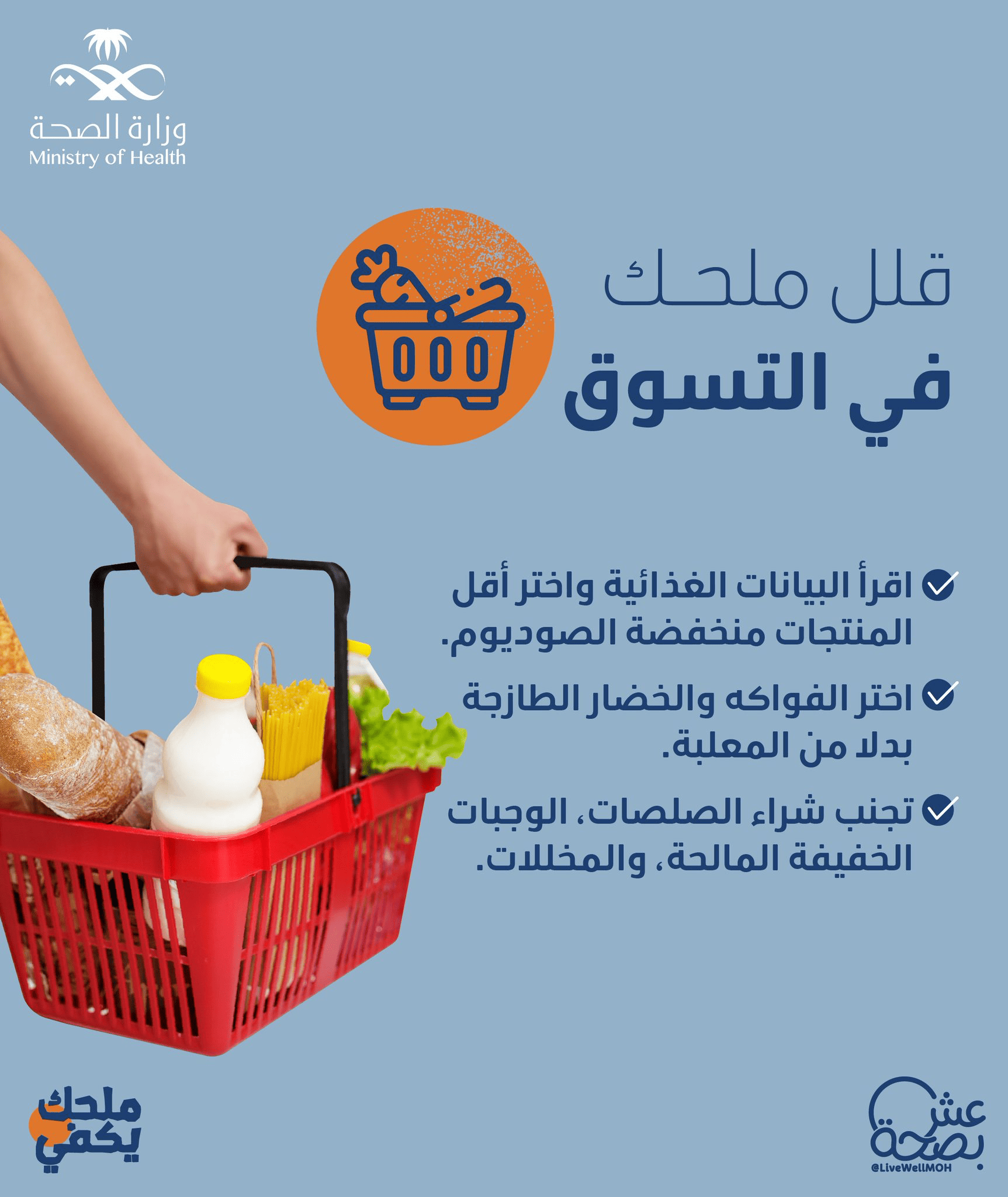Facts about Salt:
- 40 % of the salt consumed daily comes from bread, followed by cheese, tomato products (sauces), processed meats and salt added during eating.
- Nearly 75% of the salt in the diet comes from processed foods and meals prepared outside the home.
Salt Names on Nutrition Facts Labels:
Sodium, soda, or salt.
Is salt the same as sodium?
No, table salt is called sodium chloride, which is made up of 40% sodium and 60% chloride. A teaspoon of table salt contains about 2,000 milligrams of sodium.
Sodium:
An essential nutrient that is necessary for many normal bodily functions, most of the sodium we consume comes from salt. Your body needs a small amount of sodium, but too much of it is harmful to your health.
Consuming too much sodium or salt can lead to:
- The body retains fluids, causing bloating and weight gain.
- High blood pressure.
- Increased risk of heart disease and stroke.
Therefore, reducing your salt (sodium) intake helps lower your blood pressure and improve your heart health.
Daily consumption limit:
For your health and to reduce the risk of cardiovascular disease, make sure to reduce your daily salt intake to less than 5 grams, which is about a teaspoon per day.
- 5 grams = a teaspoon.
- Eat less than 5 grams of salt (about 2 grams or 2000 milligrams of sodium).
Top 6 Common Foods That Are High in Salt:
- Bread
- Pizza
- Sandwiches
- Processed meats
- Canned and ready-made soups
- Tacos.
Sneaky Sources of Salt:
- Cheese and yogurt.
- Canned vegetables.
- Ready and frozen meals.
- Sauces (ketchup, mayonnaise, mustard).
How to reduce your salt or sodium intake?
- Replace salt with food flavors such as lemon, vinegar or spices.
- Avoid adding extra salt to foods when eating (avoid putting salt on the dining table).
- Wash canned vegetables and legumes before eating them and replace them with fresh ones.
- Check the salt (sodium) content on the product's nutritional label before purchasing it.
- Compare the amount of sodium in different products by reading it on the nutritional label, and choose the one with the lowest sodium content.
- Avoid adding sauces to meals (ketchup, mayonnaise and mustard).
- Choose canned foods that are labeled "low sodium" or "no added salt".
Choose your food wisely, as sodium (salt) content can vary within the same food categories, so be sure to read the food label carefully and choose products that are lower in sodium content.
